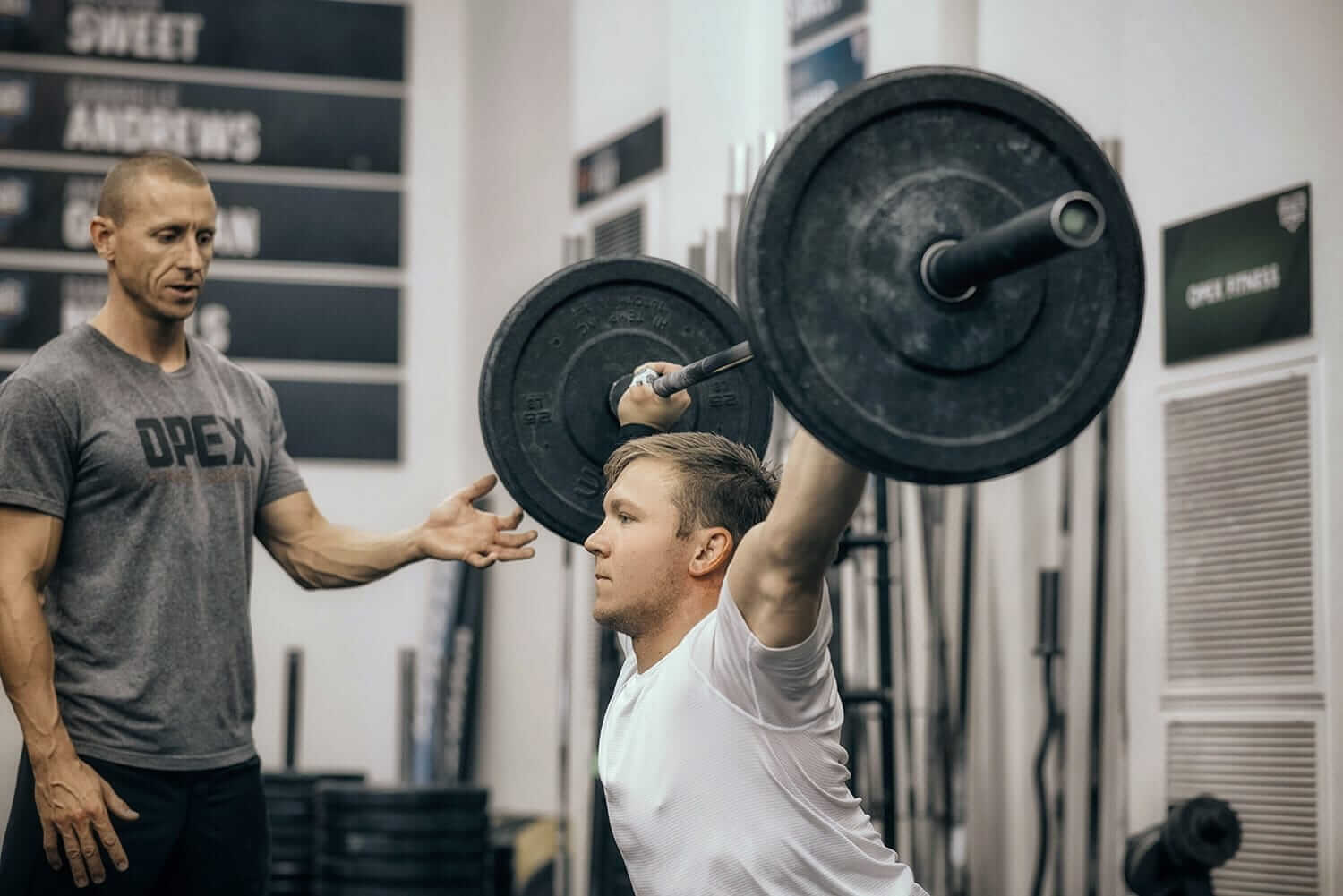OPEX’s culture of challenging the status quo in fitness began with founder James Fitzgerald. He began his career in clinical research and has written studies on muscle fatigue published in Physiology Canada, The Canadian Journal of Applied Physiology, and the Journal of Strength and Conditioning Research. In 1999, he started applying his research to the real world when he began coaching fitness. Fitzgerald gained the attention of the fitness world when he won the inaugural 2007 CrossFit Games by applying his research knowledge to training. Seven years later, he opened the OPEX Fitness facility, now one of the leaders in coaching education and functional athlete training in the world. Today, OPEX Fitness has certified 1900 coaches worldwide and produced 75 Crossfit Games competitors and one Crossfit Games champion.
Fitzgerald applies the same standards of integrity and accountability that are expected in academic research to his coaching. When he looked for a valid method for measuring body composition at OPEX Fitness, he studied what devices were used in the fields of medicine and research. After exploring all possible options, Fitzgerald decided on InBody, a DSM-BIA device used by doctors and researchers in leading facilities around the world.
Fighting Fake Science
Today we find that many fitness professionals are too focused on creating marketable fitness programs that sell instead of focusing on the individual needs of their clients. That means designing “new”, “innovative”, “one-size-fits-all” programs that all promise more dramatic results in less time. There is a competition to be the best solution with the fastest results, but many of these programs provide little to no data to back their claims.
“Marketing is now stronger than education, so the truth in science has been questioned. It’s not uncommon to see fake news — or fake science — being plastered everywhere.The consumer now has no idea what is [true] in fitness.”
Fitzgerald saw a need for a fitness program backed by research that would be able to show real progress through valid measurements. If he could show his clients the real changes that were happening beneath the surface, he would create buy-in and keep clients coming back. This inspired him to create a system that could track this progress, which he named OPEX Body: a comprehensive individual assessment process. It factors in an individual’s physiological profile and fitness ability to create a biological marker, a starting point for their fitness journey.
“This is what your marker presented today. Based upon your goals and what you want to do, here’s the plan that’s going to lay out how to get you there, and we’re going to use this marker to continue to measure that over time.”
The marker helps coaches identify client’s strengths and weaknesses and prescribe a tailored fitness program based on the client’s flexibility, strength, and endurance. Together, client and coach can see the improvements in body composition and vital signs. And together, they can make adjustments to ensure there is a continual progression toward their goals.
The Commitment to the Truth
The OPEX assessment process was refined over 25 years of trial and error. At the beginning of his career, Fitzgerald was trained to measure body fat composition through multiple hand-caliper devices to create a fat score. One client would get six or seven different versions of a body composition score. He felt he was not actually measuring the client, but he was actually choosing a score to fit the client. However, calipers remained an industry standard because they were cheap and easy to use.
Fed up, he realized that all the positives of calipers were overshadowed by its negatives. He had the ability to create a perfectly tailored training program to get someone to their goal. However, if his measurements were wrong, his entire program would be based on a faulty assessment and not on the client’s individual needs.
Fitzgerald decided he needed to upgrade his tools and started studying what medical professionals and researchers were using for body composition: DEXA, Bod-Pods, underwater weighing and bioelectrical impedance.
“Going from calipers to any of those [devices] wasn’t as economical. But I want the truth. So I’ll do whatever it takes to get the truth”.
During his search, he came across InBody at his doctor’s office. His doctors were using InBody to assess patients to determine their baseline. They would then use this baseline as a guide to improve patients’ function, rehabilitate them, and increase their longevity. He immediately saw the value that the InBody provided. Here was a medical-grade device that could provide an accurate, in-depth analysis of an individual’s body composition. The results were an actual measurement of the individual, not an estimate or calculation based on age and gender.
Intrigued, Fitzgerald wanted to test the InBody against other body composition devices.
InBody: The Uncheatable Device
He took different types of body composition devices- BodPod, different kinds of caliper devices, DEXA, underwater weighing, DSM-BIA – and put them all against one another. The goal was to compare InBody’s accuracy to other gold-standard devices and understand the differences between the measurements. Fitzgerald even invited representatives from each body composition company to OPEX Fitness to demonstrate their devices themselves to ensure he was following the testing protocol perfectly. Then he changed the variables to see if InBody was really too good to be true.
“InBody became the number one answer because we tried to break the system, we tried to cheat the system, and there was no way we could cheat it: it still gave us the truth in what it was scoring no matter how hard we tried.”
Fitzgerald specifically went against testing guidelines to see how each device would respond. He tested people both pre and post workouts, wanting to see a change in the structure of water. In other devices, he was unable to see the real changes that the body undergoes after a workout. However, the InBody was able to clearly show the body water differences in the athletes, making it the clear winner against all the other devices.
“Nothing beat the InBody for repeatability and the validity of what we’re trying to get with what we want, which is the truth in numbers to give us indications as to how the fitness program is doing.”
Deeper Insights with the InBody Result Sheet
Today, OPEX has fully integrated InBody into its methodologies, whether they are training high-level athletes or regular Janes and Joes. All OPEX clients use the InBody as part of their initial and continuing assessment process. Fat and lean body mass measurements that the InBody provides are points of emphasis because they help tie in all of the services that OPEX Fitness provides.
For example, a client’s lean body mass measurement is not only used to guide training programming but for nutritional planning as well. The InBody Result Sheet shows the level of lean mass in each segment of the body, if that segment is adequately developed, and how balanced each segment is to one another. An OPEX Fitness coach will then create training programs based on the specific needs of that client.




From there, the coach can explain how their lean body mass level will affect their metabolism, or basal metabolic rate, which is a building block for a nutritional plan. Because the InBody Result Sheet provides a baseline of how many calories the client’s body burns naturally per day, it is easy for coaches to give an exact number of the macronutrients that are required to fuel lean body mass gain while still losing fat mass.
Finally, OPEX coaches can make the connection to overall health as the lean mass increases and fat mass decreases. The InBody visceral fat measurement shows if a person’s visceral fat falls within the healthy range. By decreasing visceral fat, coaches are helping their clients lower their risk for health complications in the future like heart diseases and diabetes. This data helps make the connection between how physical health relates to overall health for the client and instantly creates more credibility and value for OPEX Fitness.
InBody body composition testing has also allowed Fitzgerald to upgrade the coaching for OPEX’s sponsored Crossfit athletes. They are able to combine the outputs of the InBody with other tools at their facility to gain new insights. One insight they have gained was found by comparing Forced Expiratory Volume to InBody’s lean body mass measurement.
Forced Expiratory Volume (FEV) is an indirect measurement of lung capacity. By comparing the lean body mass measurement with the total amount of air exhaled, OPEX coaches can examine the oxygen exchange capability. In layman terms, this is a look at an athlete’s endurance. It is no longer a mystery why two similar level athletes on comparable training programs don’t have the same level of output. By examining the oxygen exchange capability, OPEX coaches can see that these two similar athletes may have comparable levels of lean body mass but a large difference in lung capacities. The InBody gives a precise lean mass measurement to enable OPEX coaches to say: “you have a lot of muscle, but you don’t the oxygen exchange capability to support that muscle, we really need to improve that exchange”. Adjusting the training to improve exchange will increase output and that is tremendously important in a sport like Crossfit.That insight has helped OPEX coaches to improve their team’s performance.
OPEX and InBody are Leading the Future of Fitness
Although Fitzgerald doesn’t like the state of fitness today, he is encouraged by the direction it’s heading toward. The general public is beginning to realize the importance of measurements when it comes to setting and achieving health goals. People will want an individualized score that is truly representative of their body, and the technology to provide these scores is becoming increasingly accessible and accurate. Fitness instructors will need to learn how to interpret those scores and make appropriate programs based on where the individual is at in terms of their health.
“With the future of biotech and the interest level in that, my belief is that companies like InBody will hold the key for the connection between the best prescriptions possible to help people to live large and long and prosper. InBody has a big part to play in the future and OPEX will be right alongside InBody doing that.”
Looking for healthcare data to improve decision making to promote better patient outcomes? We can help. Contact Us






